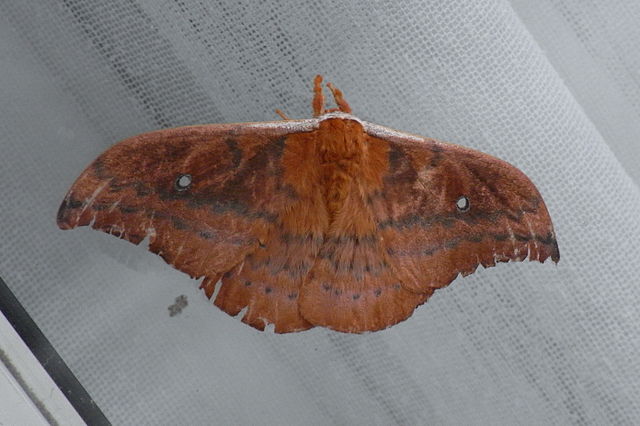Gonimbrasia belina is a species of emperor moth which is native to the warmer parts of southern Africa. Its large edible caterpillar, known as the mopane worm, madora, amacimbi “pigeon moth” or masontja, feeds primarily but not exclusively on mopane tree leaves. Mopane worms are an important source of protein for many in the region. The species was first described by John O. Westwood in 1849.
Image: Colophospermum mopane 50D 0486
Image: Adult Emperor Moth
Mopane worm egg cluster
A hatched or parasitized egg cluster on a mopane leaf
The Saturniinae or saturniines are a subfamily of the family Saturniidae, also known as giant silkmoths. They are commonly known as emperor moths or wild silk moths. They are easily spotted by the eyespots on the upper surface of their wings. Some exhibit realistic eye-like markings, whilst others have adapted the eyespots to form crescent moon or angular shapes or have lost their wing scales to create transparent windows. They are medium to very large moths, with adult wingspans ranging from 7.5 to 15 cm, in some cases even more. They consist of some of the largest sized Lepidoptera, such as the luna moth, atlas moth, and many more. The Saturniinae is an important source of wild silk and human food in many different cultures.
Saturniinae
Callosamia angulifera caterpillar (Attacini)
A "mopane worm", the edible caterpillar of Gonimbrasia belina (Bunaeini)
Syntherata janetta of the Saturniini








